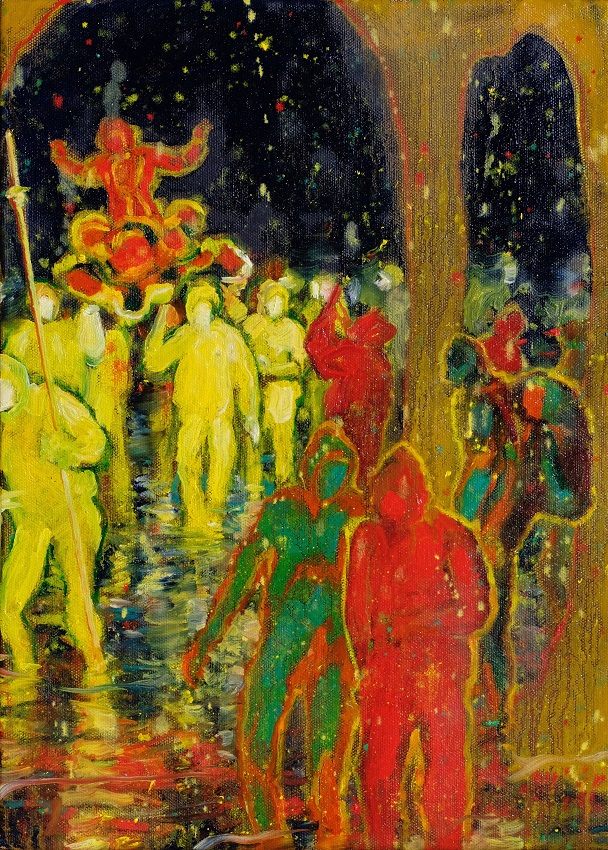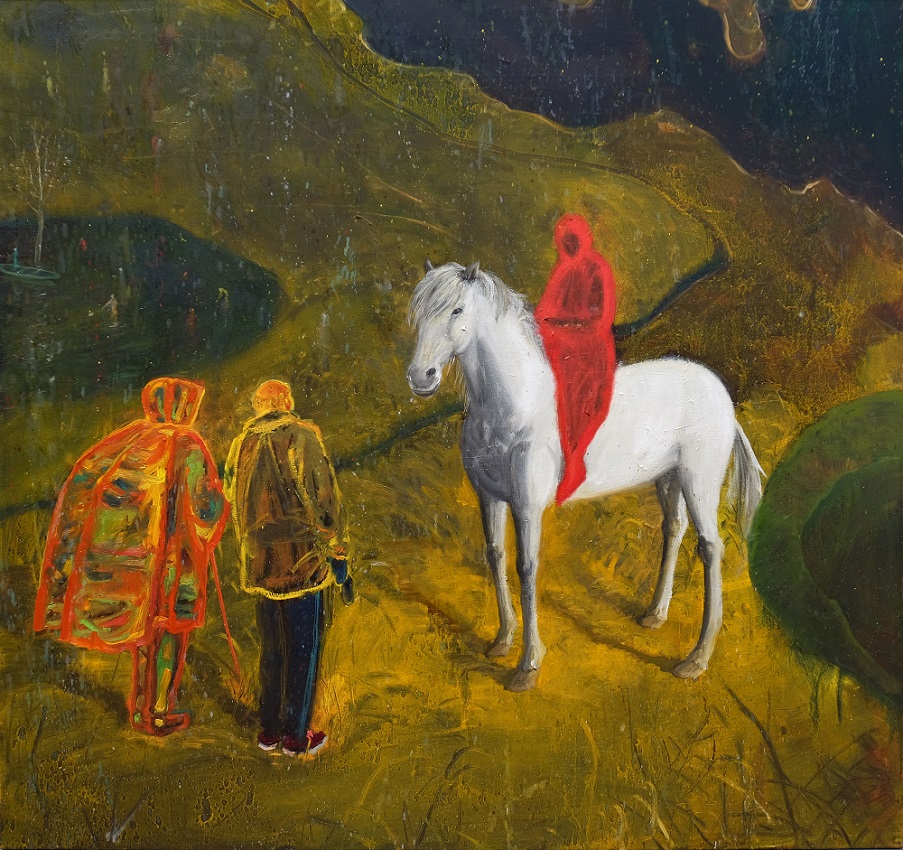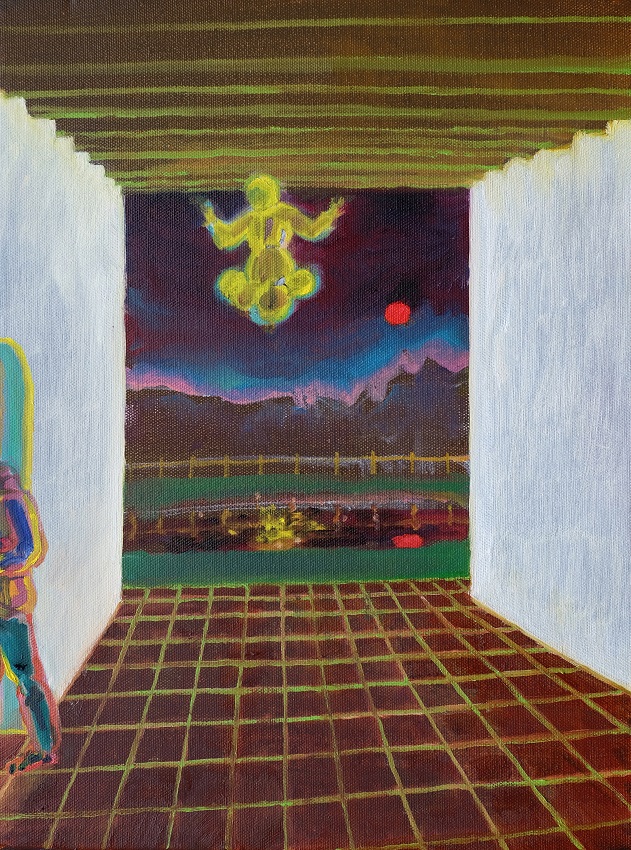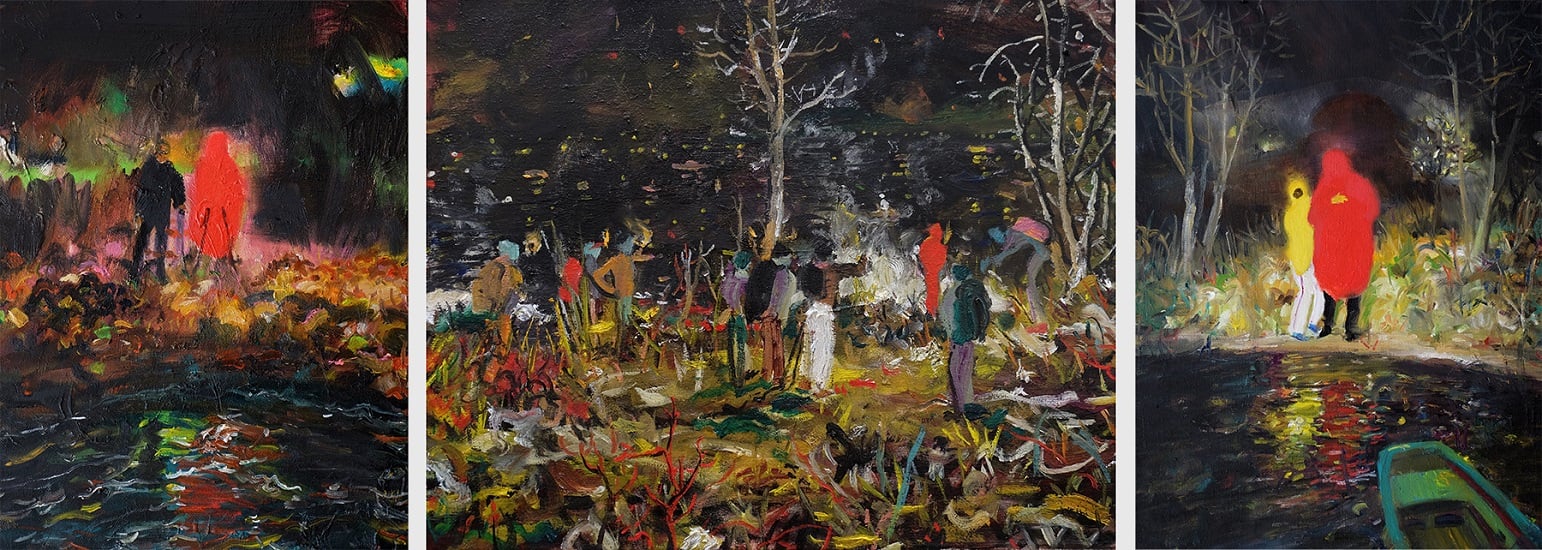Singaporean-born painter and Ruskin alumnus Alvin Ong spends his life in-between continents, unsettled and unsettling. As he travels through countries, he moves lightly across art and forms of representation, depicting scenes stuck between internal, near-fictive visions and the everyday world.
He studied architecture for two years before choosing painting as his primary medium, for its versatility and the flexibility it offers. “In architecture school, my drawings acquired the camouflage of the designer, dedicated to the ceaseless production of preliminary ideas, false starts—lines that suggested wall, floor, concrete, garden, bush.” This brings him to his years at the Ruskin School of Art, which ended with the highlight of the 2016 Ruskin show put on by the year’s graduating students. “I think because of the linear instruction I received in my previous education, I found it initially difficult to adjust to life at the Ruskin. So I continued accepting commissions, doing one for Chelmsford priory, and a few for the Oxford Oratory down the road from my college, St Anne’s.
“Gradually, I began to devote my energies away from commissions and toward the rhythm of a self-driven practice. At the same time, I also found through the presence of my neighbours a creative energy in the studio, as we spurred one another on to take bigger risks. The school became a safe space for experimentation.”
‘We will meet’, Alvin Ong’s second solo exhibition was shown last year in the Chan Hampe galleries, set inside the prestigious white walls of Singapore’s Raffles Hotel Arcade. The initial idea for the exhibition came to the artist and poet friend Theophilus Kwek during their years in Oxford, leading to similar experimentation which took three years to finalise. The result is a collection of large canvases and short, free verse poems each with the same titles providing them with a common starting point from which they then build their own atmospheres.
“In my painting titles, I find myself often drawing from poetry and song, mediums which give voice to that which can be felt, but not necessarily understood. One of my personal favorites, for example, is the painting, ‘A Shadow and a dream’. I took the title from Tavener’s choral work, ‘Song for Athene’, which I felt vacillated between the feelings of arrival and departure. In very much the same way, I also see the function of the text, alongside Theo’s poems, as given to suggestion, as opposed to illustration.”
Working with newly-assembled words on ‘We will meet’ was not an exception for Alvin Ong. Theophilus and him share an interest in travel, in the way history is presented today and in all the possible consequences of this on a rather unstable notion of identity, which had already led them to work together on the writer’s poetry collection Giving Ground, where roles were switched as Alvin’s art completed the text.
“’We will meet’ came out of an ancient pilgrim route I undertook on foot over Easter last year, traversing around 800 kilometers of the Spanish northern coast from Irun to Santiago de Compostela, and then to the cape of Finisterra, the ‘end of the Earth’. Each day, I found myself in a different town, sleeping under a different roof. ‘Home’ became a place to rest my aching feet, to share a meal, to sleep and to clean oneself. Some of these pilgrim inns were ran by volunteers, while others were convents, monasteries or farms.”
These foreign images became the basis of Alvin’s next paintings, mixing in the various atmospheres and by then slightly blurred faces he met during his travels.
“Along the way, I also met and walked with other people. We would trade stories, share our food and our lives with one another. I am left with the memories of these encounters, no matter how fleeting, and these are the starting points for each of my paintings in this series.”
Alvin’s paintings are lit by fuzzy back and sidelights, making his journey companions into silhouettes whose outlines are reinforced by startling colours. The grain of the canvas and the thick lines of painting bring a confusing sense of materiality in his images of monks and ritual processions.
“The wee hours past midnight on Good Friday in Seville were the most dramatic of the Easter processions, against miraculous icons and objects surrounded by flowers, incense, and candlelight. These were the memories that inspired ‘The miracle’.
“Like them, the convents and monasteries that sheltered me in Spain always seemed to belong to another place and time. There was one night in Ziortza when after the evening prayers, the monks switched off all the lights and just sat in silence. I sat with them, in that stillness; it was such a memory of indescribable simplicity and beauty. These are the places I return to in painting. Fictional places I found myself revisiting, all mixed up in wonder, fascination, and alienation.”







